This survey was designed and carried out by Mrinalini Luthra, pre-PhD fellow at CREATE and Dr Giovani Colavizza, Assistant Professor, Digital Humanities, UvA.
Digital methods and resources enable new and valuable modes of inquiry, collaboration, research and teaching. With the COVID-19 pandemic, given the widespread adoption of education technology and of digital collaboration, significance of digital pedagogy is particularly felt. Committed to supporting and assisting with adoption of digital methods, CREATE carried out a survey of existing course offerings within the UvA Humanities to understand the use of digital methods in research and teaching.
This survey was extended to all course coordinators and lecturers in the humanities faculty, UvA. The survey responses are considered per course. The survey turnout was low—the survey was taken for only about 20% of all courses in the humanities and the data shows that at least 70% of these courses were already using digital methods or are interested in adopting digital methods.
Digital methods considered in this survey are: statistics and mathematics (SM), data modelling and analysis (DMA), data visualisation (DV), information extraction (IE), network/text/image processing (NTIP), audio visual analysis (AA), 3D modelling (3D) and geographic information system (GIS).
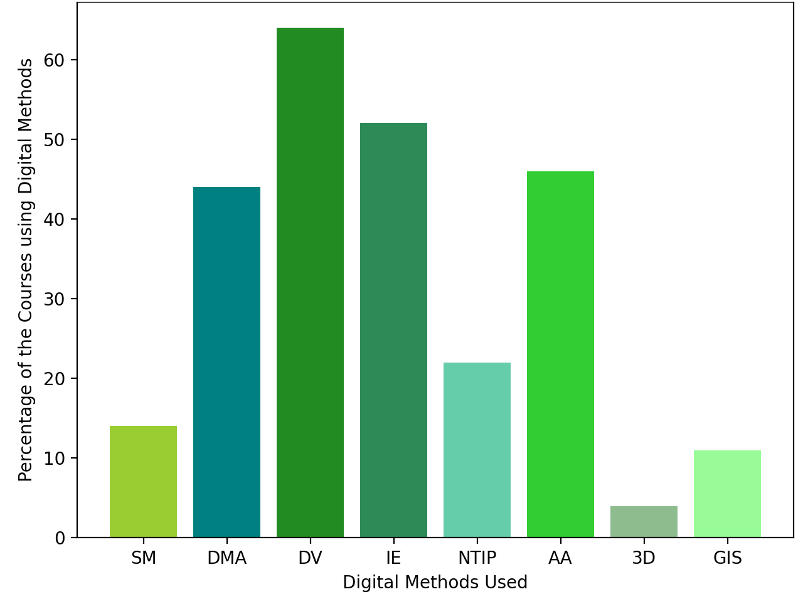
A. Use of Digital Methods
60% of the courses in the survey reported the use of at least one digital method. Most of these courses focus on analysing and critiquing digital methods research rather than actually using them to do research.
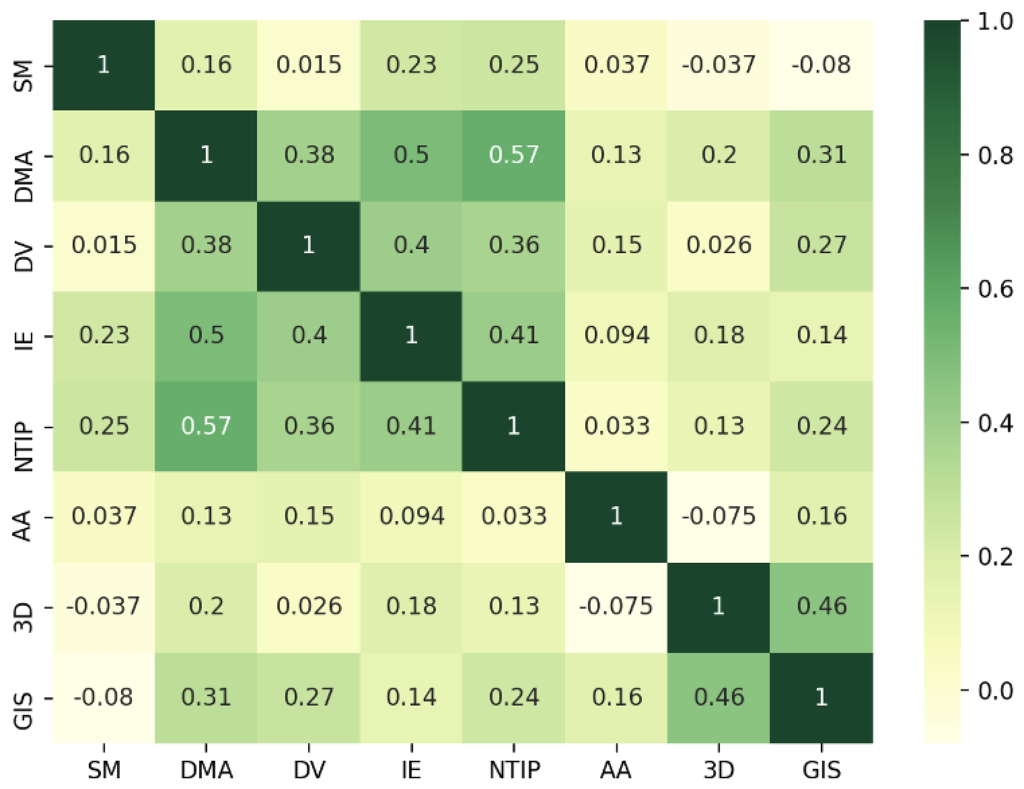
B. Correlation of Digital Methods Used
Data visualisation has high usage and moderately high correlation with other oft used digital methods: data modelling and analysis, information extraction and network/text and image processing. This owed to the fact that the Digital humanities and New Media courses frequently use these methods. While audiovisual analysis is highly used, it has low correlation with other digital methods since it is almost exclusively and widely used in film related studies.
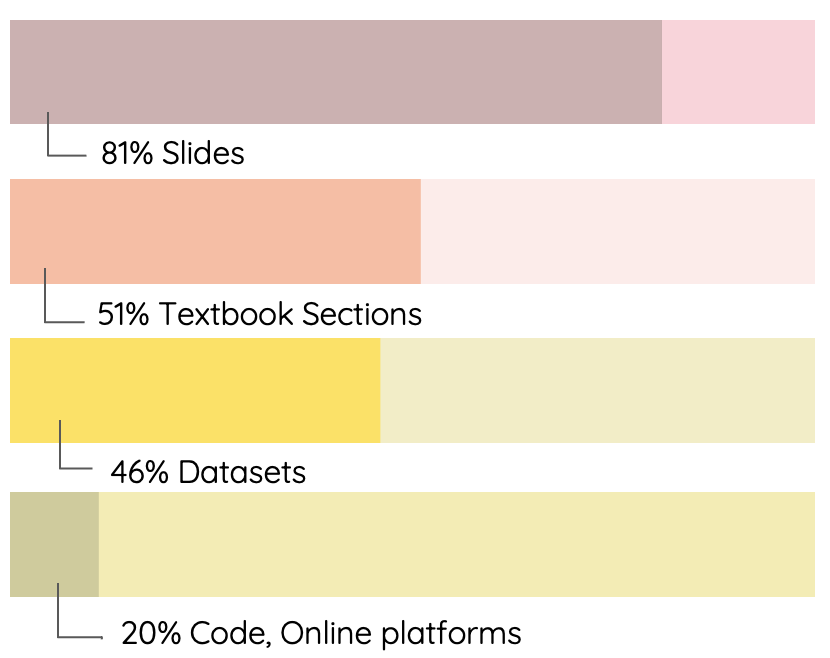
C. Approach to Teaching Digital Methods
Theory is the primary approach to teaching digital methods. Other resources used for teaching are softwares like Gephi, Tableau for data visualisation, CLARIAH Media Suite and qualitative data analysis tools like MaxQDA.
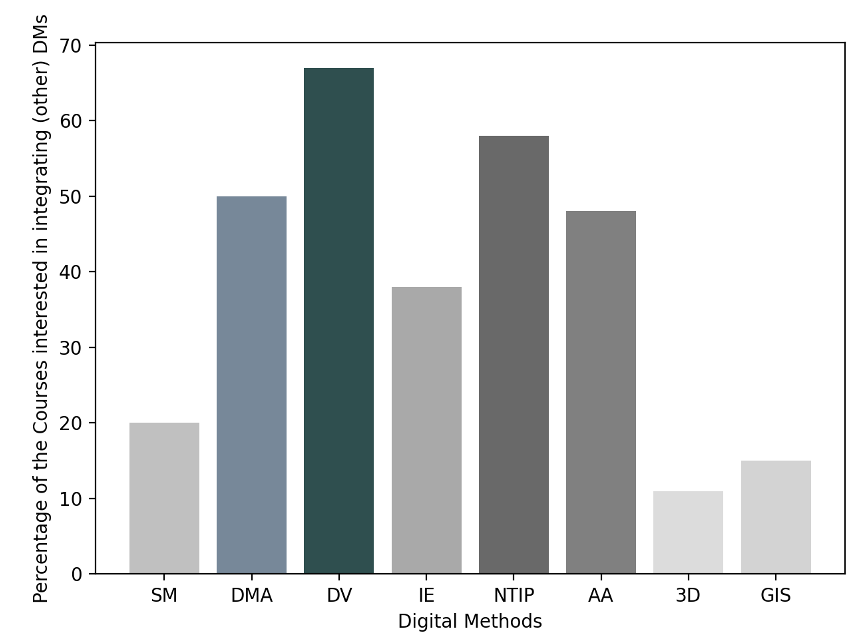
D. Digital Methods of Interest
56% of the courses in the survey expressed interest in integrating (other) digital methods, most of which were from the Media Studies. Many of those already employing digital methods are not interested in integrating other methods. This result (right) in conjunction with A show that data visualisation, data modelling and analysis, information extraction, audio visual analysis and network/text/image processing are the most popular digital methods at the humanities faculty, UvA.
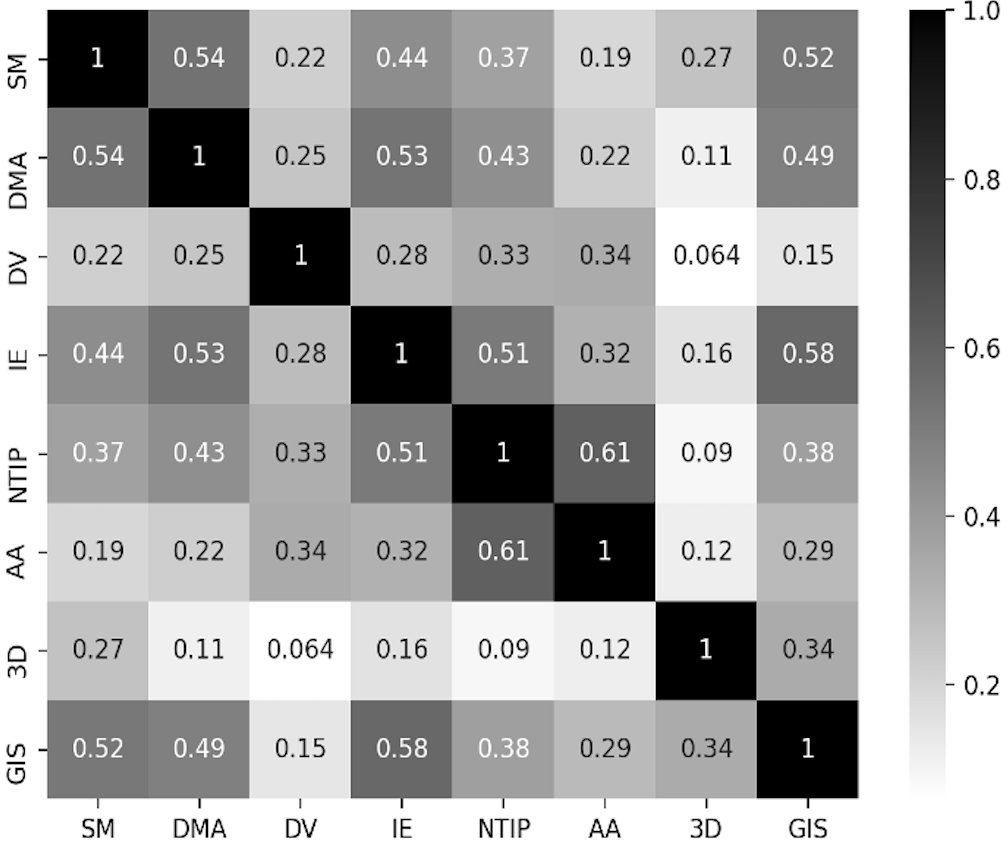
E. Correlation of Digital Methods of Interest
A high correlation is noticed between i) audiovisual analysis and network/text/image processing due to its usage in film related studies, anthropology and history, ii) information extraction and network/text/image processing, data modelling and analysis and statistics and mathematics due their use by New Media and Digital Humanities
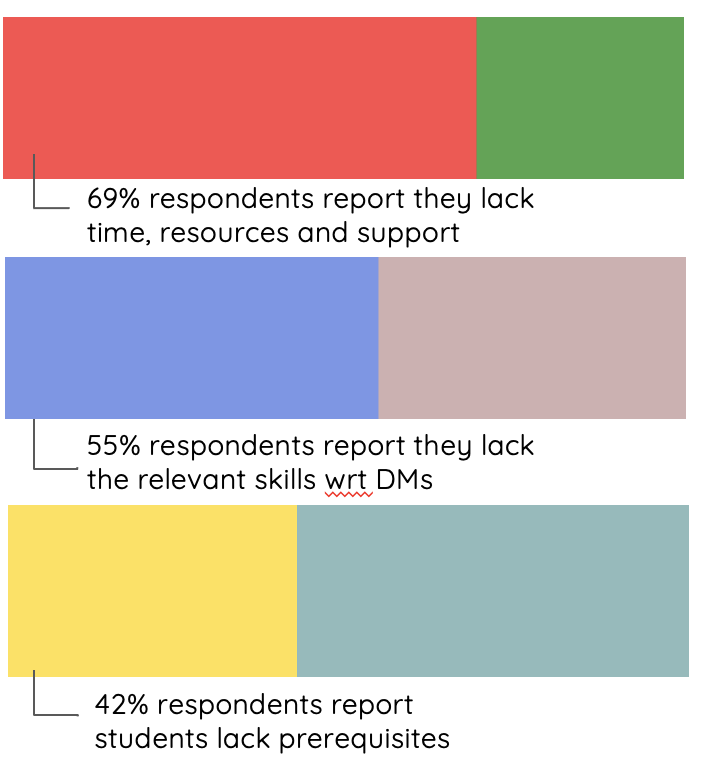
F. Obstacles to Integrating Digital Methods
66% of courses reported the following obstacles shown to the right. More specific obstacles included: i) students require statistical training ii) software is not packaged well enough for teaching iii) multiple levels of acquaintance with digital methods among students and iv) too large seminar groups.
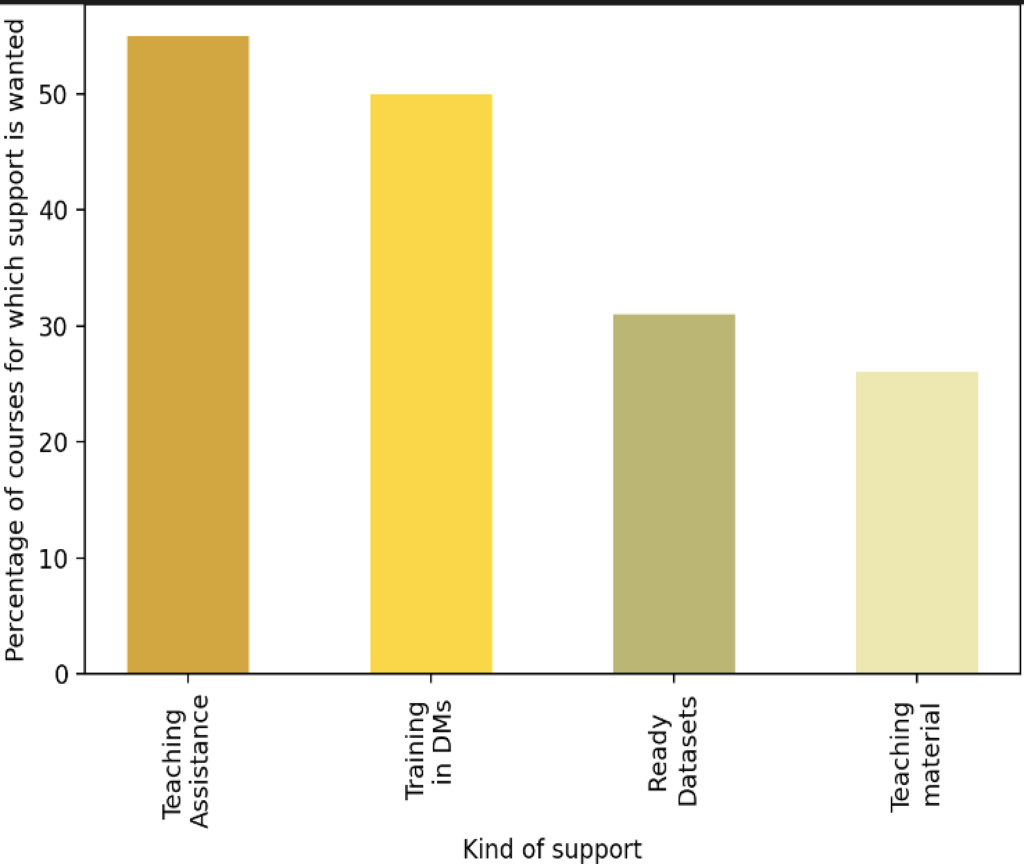
G. Support for Teaching Digital Methods
60% of courses expressed support with teaching digital methods. Other kinds of assistance required: training in digital methods: topic modelling, stylometrics, network analysis; a platform with relevant applications and tools.
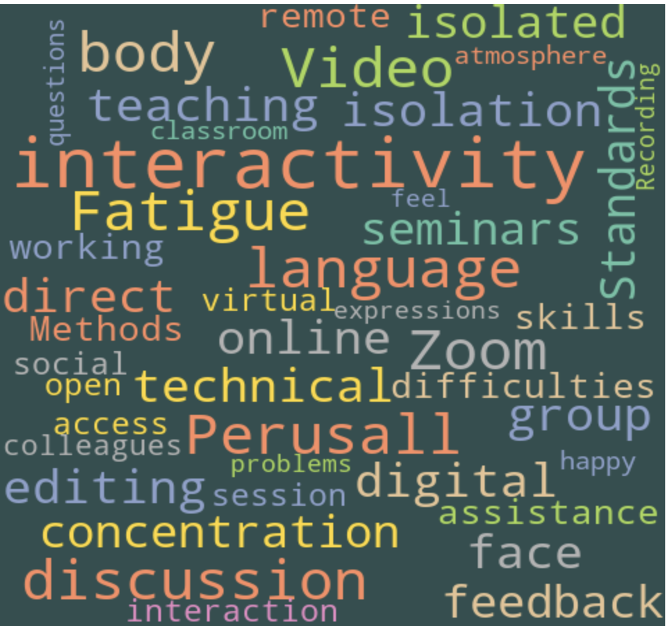
H. Digital Pedagogy during COVID-19
The word cloud shows the most used terms by teachers in response to their learnings and difficulties with regards virtual teaching, a few of which are i) zoom fatigue ii) difficulty in stimulating group discussions iii) need for standards for virtual teaching iv) difficult to understand if the students are comprehending due to the lack of feedback and inability to read body language.
